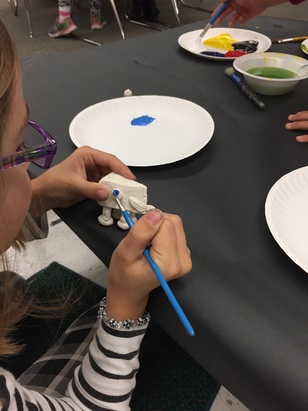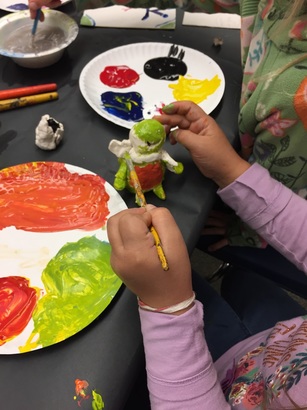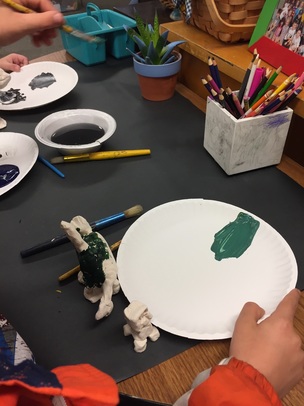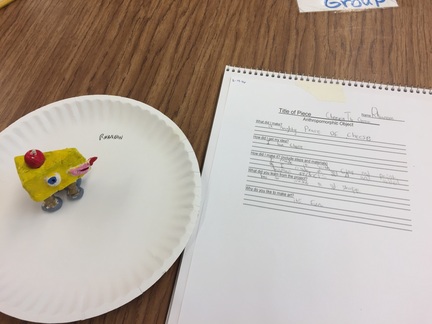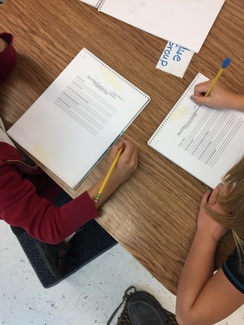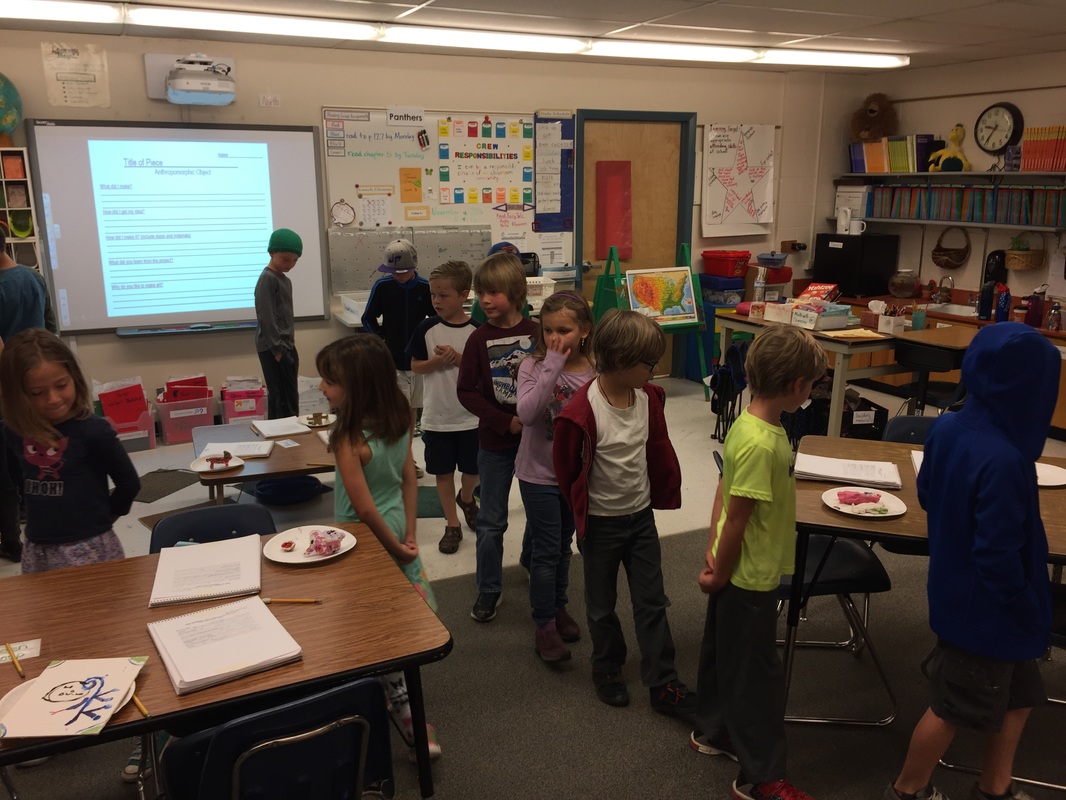Anthropomorphic ObjectFor the fourth lesson, students will be introduced to the idea of anthropomorphization. After observing how contemporary artists (Annie Montgomerie, Nemo Gould) are using this concept in their work, students will create their own anthropomorphic object in the form of a clay sculpture. Students will begin their ideation by imagining what one of their favorite objects would do if it came to life. What would it look like? How would it move? What would it do? While working with clay, students will be introduced to several building techniques, including slab and coil building. After completing their sculptures, students will be introduced to artist statements and write a basic version for their piece. The lesson will conclude with a “gallery walk” so that students can observe the work of their peers.
|
|
|
How'd you make your object anthropomorphic?
Once students were finished with their objects, they created artist statements for their pieces.
When describing how they made their object in their artist statement, one student said, "I made it with clay and paint. I made a cheese and added human features." Another student said, "I made a clay ball and then squeezed it into the body."
Students then reflected on their work, their classmates work, and their artist statements by taking a "gallery walk" through the classroom. "I saw pants on the cheese!."Another student thought that the artist's title of robot man helped them understand the piece. When asked what artists can talk about in their statements, students replied with, "you can talk about how the art made you feel." and "you can talk about how you made it."
